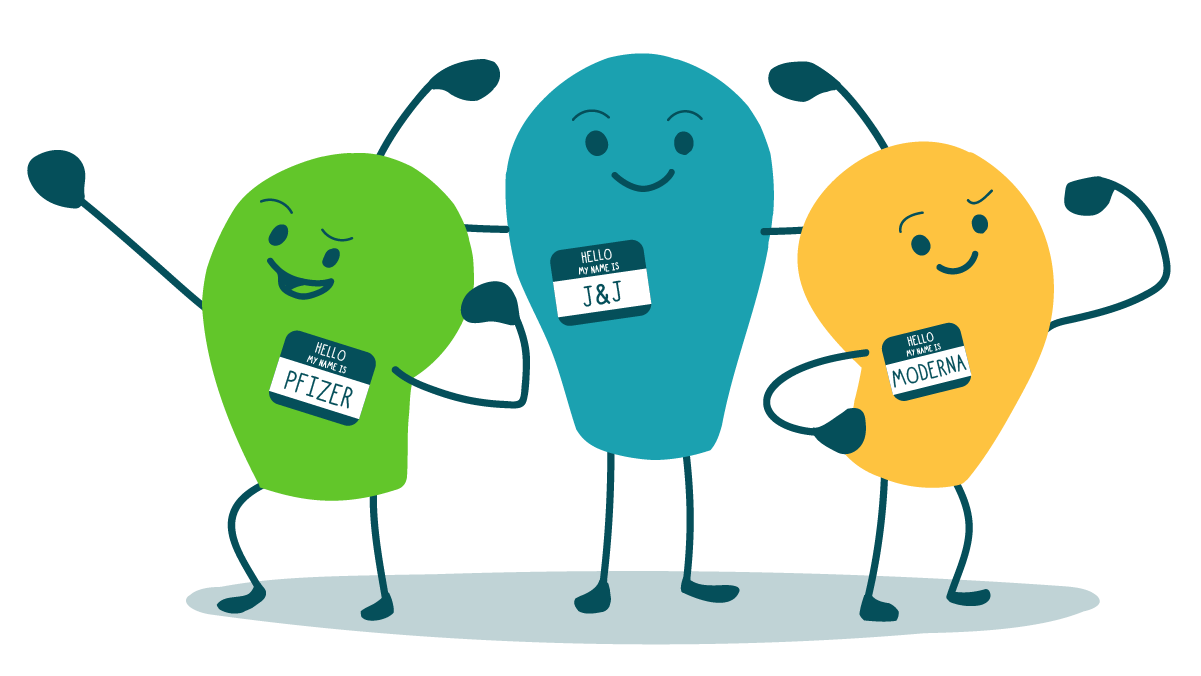[ad_1]

With 3 different COVID-19 vaccines now on the market in the United States, and more and more people getting vaccinated every day, lots of tricky new health comm questions are popping up! So this week, we’re sharing some tips to communicate clearly about the vaccine rollout.
First, a little disclaimer: the vaccine landscape is changing fast! New shots may be available soon, and guidelines may shift as researchers gather data from ongoing trials. But based on what we know now, try these tips:
- Stress that all 3 authorized vaccines (Pfizer, Moderna, and Johnson & Johnson) are safe and effective. Understating vaccine benefits can be as harmful as overstating them — so tell people how amazing these shots are! Just over a year into this devastating pandemic, we now have not 1, not 2, but 3 vaccines that can help prevent sickness and death from COVID-19. That’s some good health news we can all shout from the rooftops.
- Don’t say they’re exactly the same. After all the time we public health folks have spent explaining mRNA technology, people may wonder about the difference between that approach and Johnson & Johnson’s adenovirus delivery system. But researchers haven’t yet done an apples-to-apples, head-to-head-to-head clinical trial to compare the 3 vaccines. When they do, key differences may emerge — like one proving more effective against a certain variant. So, to avoid pesky U-turns down the line, stick to the facts: we’re still gathering data — but we know they’ve all gone through rigorous safety testing, and we know that all 3 work really well.
- Encourage everyone to get the first vaccine they’re offered. Since we don’t yet know enough to say whether one shot is better than another, it makes sense for health communicators to encourage people to get whichever vaccine they’re offered first. Because the best vaccine is the one you can get before you come into contact with the virus. And with the pandemic still raging and vaccine demand still outstripping supply, now is not the time to shop around.
- Be honest about everything we know and don’t know. Experts are hopeful that the vaccines will prevent people from spreading the virus — but we need more time and data to know for sure. We’re also not sure exactly how long protection from the vaccines will last. But we can assure people that any of the 3 vaccines will help protect them (at least in the short term) from getting sick with COVID-19.
- Keep up the calls for vaccine equity. As vaccination stats roll in across the country, it’s clear that white people are getting vaccines at much higher rates than Black and Hispanic people. And since we know that racism and other social factors make Black and Hispanic people more likely to get sick and die from COVID-19, these vaccine disparities are not only unjust, but deadly. As health communicators, we need to name this problem, prioritize outreach and access for communities of color, and call for policymakers and institutions to do better.
- Offer easy-to-understand guidance for fully vaccinated people. Once people get their shots, they’re likely to have a whole lot of questions! CDC now offers some specific guidelines, but the gist is: fully vaccinated people can do more things safely (huzzah!), but they can’t behave like the pandemic is over. For example, we’ll all still be wearing our masks to the grocery store for a while. But fully vaccinated friends can hang out indoors without masks, just like in olden times! So continue to promote the recommended safety measures — but don’t forget to celebrate the freedoms vaccines are bringing back.
The bottom line: To communicate clearly during vaccine rollout, be transparent and encourage everyone to take their first shot at protection.
[ad_2]
Source link